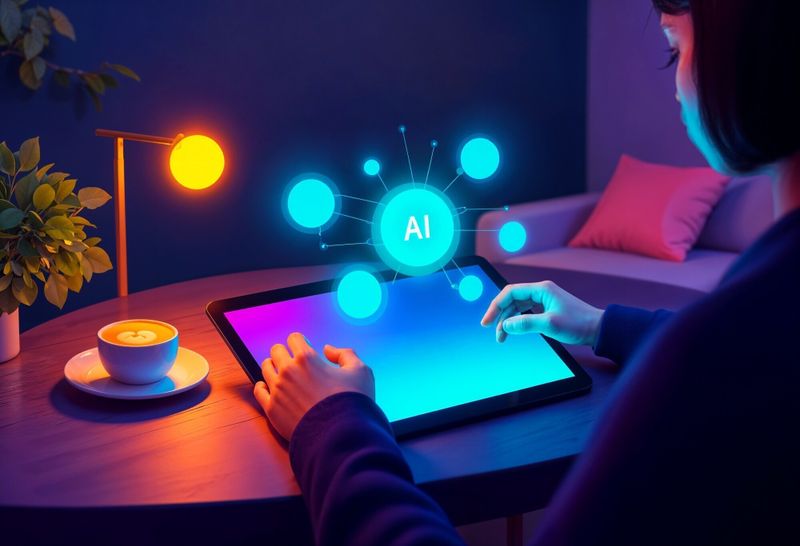The way we create and experience music is evolving at lightning speed, and artificial intelligence is at the heart of this transformation. From generating soundtracks for content creators to helping musicians experiment with new genres, AI Music Generator platforms are opening doors that didn’t exist before. What used to take hours in a studio can now be achieved in minutes, often for free and without requiring deep musical expertise.
In this guide, we’ll explore how you can make AI music, highlight the best free tools available today, and answer some of the most common questions about the technology. Whether you’re a business owner looking to create background music, a content creator searching for royalty-free tracks, or just curious about experimenting, this blog will help you get started.
Why AI Music is Becoming So Popular
Music has always been tied to technology. From vinyl records to streaming platforms, every leap in tech has reshaped how we consume and create music. AI is the next leap.
Here’s why AI music is getting so much attention:
Accessibility – You don’t need a background in music theory to compose something unique.
Speed – AI can generate a full track in seconds.
Cost efficiency – Many tools offer free access, which is perfect for small businesses, students, or independent creators.
Customization – AI lets you control genres, moods, and even lyrics, tailoring the output to your needs.
For industries like SaaS and digital business, AI-generated music can be a game-changer. It’s not just about creativity—it’s also about efficiency and scalability.
How to Make AI Music in Simple Steps
Making AI music doesn’t have to be complicated. Here’s a simple process anyone can follow:
1. Choose a Reliable Tool
Pick a platform that fits your goal. If you want background music for videos, go with tools that specialize in royalty-free production. If you’re experimenting with lyrics, explore ai music generator from text options.
2. Define Your Input
Most platforms let you provide inputs like mood (happy, calm, energetic), genre (rock, electronic, lo-fi), or even instruments. The clearer your input, the better the result.
3. Generate and Refine
Within seconds, the system will generate one or multiple versions of a track. You can then tweak, remix, or regenerate until you’re satisfied.
4. Export and Use
Finally, download your track in MP3 or WAV format. Some tools also allow integration with editing software, making it easier to add the music directly into your workflow.
The Best Free AI Music Generators
There are dozens of music AI tools available, but only a few stand out for being reliable, easy to use, and accessible. Below are some of the best free options to try:
1. Soundraw.io
Soundraw is a great platform for beginners. It allows you to generate tracks by selecting moods and genres. Its drag-and-drop style makes it simple to customize.
2. AIVA (Artificial Intelligence Virtual Artist)
AIVA is widely used by composers and professionals. You can experiment with classical, jazz, or modern sounds. It’s particularly useful if you’re looking for more polished results.
3. Boomy
Boomy is beginner-friendly, letting you create full songs in just a few clicks. You can also share your tracks instantly on streaming platforms, which is perfect for content creators.
4. Amper Music
Amper is popular for creating background scores for videos, ads, and podcasts. It’s intuitive and gives users control over instruments and tempo.
5. OpenAI Jukebox
For those curious about experimental AI music, Jukebox generates entire songs with vocals in different styles. While it’s more research-oriented, it shows the possibilities of AI in creative fields.
Additional Resources You’ll Find Helpful
If you want to dive deeper into AI music, here are some high-quality resources worth exploring:
- MIT Technology Review – The Future of AI in Music
- OpenAI’s Research on Jukebox
- Towards Data Science – AI and the Music Industry
- MusicTech – AI Music Tools Reviews
Where AI Music Fits in the Digital Business World
AI music isn’t just for hobbyists. It has practical applications across industries:
Content creation – YouTube creators, podcasters, and streamers can generate background tracks without worrying about copyright.
Marketing and ads – Brands can quickly produce jingles or campaign music tailored to their audience.
SaaS integration – Platforms can embed AI-generated music features for users, adding more value to their services.
Workplace productivity – Teams can generate focus playlists or calming tracks for remote work environments.
If you’re looking to explore more digital innovations beyond music, platforms like claila
provide insights and resources for AI and tech-focused solutions.
Challenges and Limitations
While AI-generated music is exciting, it does have limitations:
Originality – AI works by learning from existing data, so results may sometimes feel repetitive.
Emotional depth – Human compositions often carry emotions that AI struggles to replicate authentically.
Copyright concerns – Although most platforms allow free use, always double-check licensing rules.
These limitations mean AI music should often be used as a support tool rather than a complete replacement for human creativity.
FAQs About AI Music
Q1. Can AI replace human musicians?
Not entirely. AI is excellent for quick compositions and background tracks, but human creativity, emotion, and storytelling remain unmatched.
Q2. Are free AI music tools safe to use?
Yes, most ai music generator free platforms are safe. Always make sure you’re using reputable sites and review their terms of service for usage rights.
Q3. Do I need technical knowledge to use AI music platforms?
No, most tools are designed with simplicity in mind. Anyone can create tracks within minutes.
Q4. Can I use AI-generated tracks commercially?
It depends on the platform. Some allow free commercial use, while others require attribution or a subscription for commercial licensing.
Q5. How does AI generate music?
AI uses machine learning models trained on thousands of music samples. It identifies patterns, structures, and instruments, then produces a new composition based on your input.
Final Thoughts
The rise of AI-generated music marks a new chapter in creativity and technology. Whether you’re experimenting for fun, adding background tracks to your content, or exploring new possibilities for your business, AI offers a world of opportunities. Tools like AIVA, Boomy, and Amper show how easy it is to turn ideas into tracks in just minutes.
As with any technology, it’s important to balance convenience with creativity. Use AI to enhance your workflow, but don’t forget the unique value of human expression.





Top comments (2)
That’s a great topic! AI music tools have really changed how people experiment with sound creation. Platforms like Mubert, Soundful, and Boomy are fantastic for beginners—they let you generate music in seconds using just text prompts or moods. What’s interesting is how some AI tools even allow integration with streaming apps for smoother playback and curation. For instance, rimusic offers a unique way to enjoy and manage music generated or streamed from various sources, making it easier to keep all your favorite AI-created tracks in one place.
AI music is changing how we create and use soundtracks—whether for content, ads, or personal projects. Free tools like Soundraw, Boomy, and AIVA make it simple to generate unique tracks in minutes, no music skills required. For businesses, this shows the power of AI-driven creativity. If you’re building custom tools or integrations, it might be the right time to hire python developers who can tailor AI solutions to your needs.